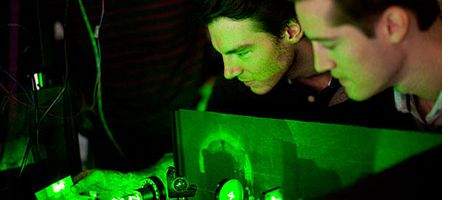Scientists have taken a big step towards practical quantum computing, with the creation of qubits that can exist in a solid-state system at room temperature.

Until now, it’s been necessary to use complex – and expensive – equipment to trap a single atom or electron in a vacuum and then cool the whole system to almost absolute zero.
Now, though, a group of Harvard scientists say they’ve been able to exploit the impurities of diamonds to create quantum bits and store information in them for nearly two seconds – almost six times longer than previous systems.
“What we’ve been able to achieve in terms of control is quite unprecedented. We have a qubit, at room temperature, that we can measure with very high efficiency and fidelity,” says professor of physics Mikhail Lukin.
“We can encode data in it, and we can store it for a relatively long time. We believe this work is limited only by technical issues, so it looks feasible to increase the life span into the range of hours. At that point, a host of real-world applications become possible.”
These include ‘quantum cash’ that could foil counterfeiters and secure quantum networks.
The development’s based on the discovery several years ago that nitrogen-vacancy (NV) centers – atomic-scale impurities in lab-grown diamonds – behave in the same way as single atoms. Each one has a spin which can be polarized; and, using lasers, researchers can both control the spin and detect its orientation as it changes over time.
However, NV centers haven’t been much use as the backbone of a quantum computer, largely because they can only hold data for about one-millionth of a second; after that, their quantum properties – and any data they may have held – are lost.
The cause is another impurity in the diamond. To start with, the team used diamonds containing 99 percent carbon-12 atoms, which have no spin. The rest, though, was made up of carbon-13 atoms, which contain a spin in the atom’s nucleus – and it was the interaction with those spins that was causing the NV centers’ short life spans.
But there turned out to be a rather elegant solution. Rather than trying to find a way to measure the spin of the carbon atoms, the team used the NV center to do it for them.
They created crystals that were even more pure: 99.99 percent carbon-12 – and then bombarded them with nitrogen to create the NV center, which interacts with a nearby carbon-13 atom.
As a result, the NV center mirrors the state of the carbon atom, meaning researchers can encode a bit of information into the spin of the atom, then read that data by monitoring the NV center.
“The system we’ve developed uses this very local probe, the NV center, to allow us to monitor that spin,” says Lukin. “As a result, for the first time, we can encode a bit of information into that spin, and use this system to read it out.”






